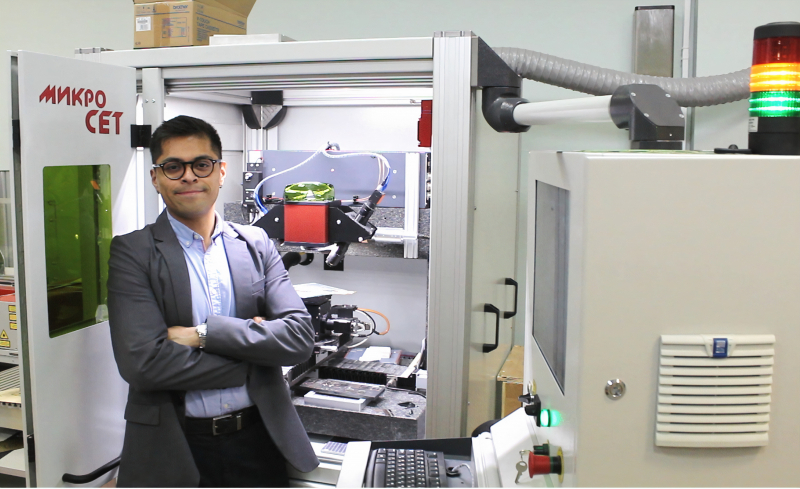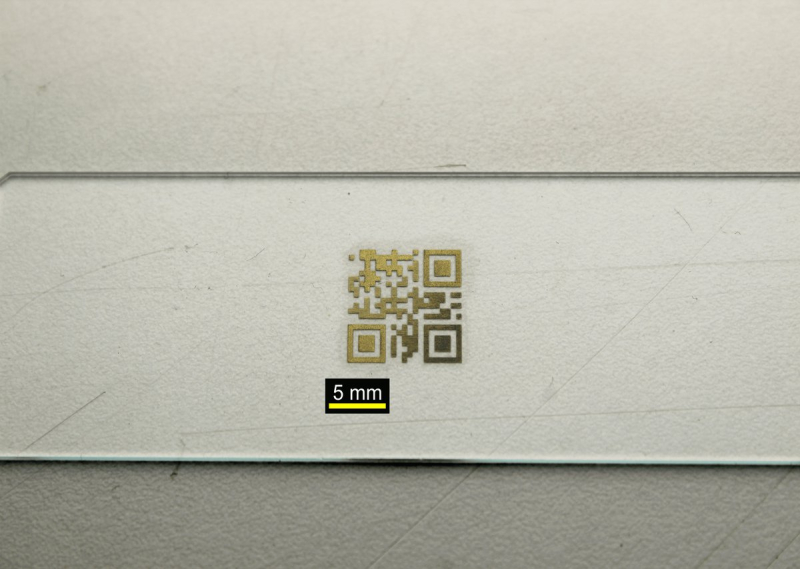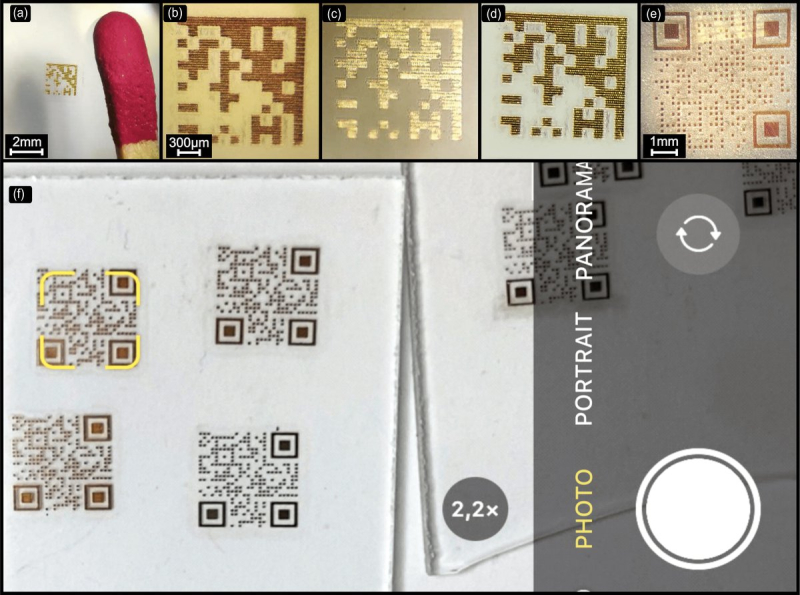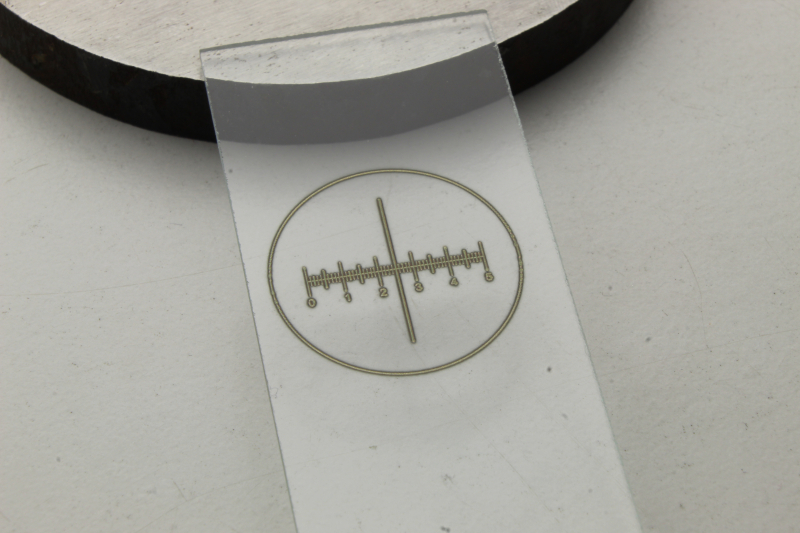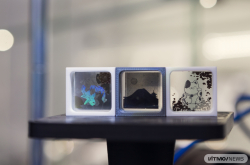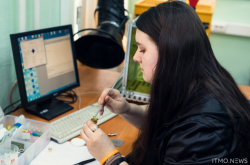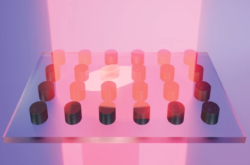How protective labeling works
With products being vulnerable to counterfeiting, it is crucial for companies to identify their products, for instance, using QR codes and barcodes that can store various types of data. For instance, labels on medical devices – be it hearing aids or coronary stents – display key information about the manufacturer, intended use, and production date. Aside from ensuring authenticity, safety labels can be used to maintain records of all medical devices in the country.
There are several ways to verify products, with laser marking being one of them. Unlike other methods, this type of marking lets manufacturers create QR codes and barcodes that are easy to scan but also resistant to mechanical, thermal, and chemical damage. The best results are achieved on glass, the reason being is that it is easier for laser radiation to pass through transparent materials.
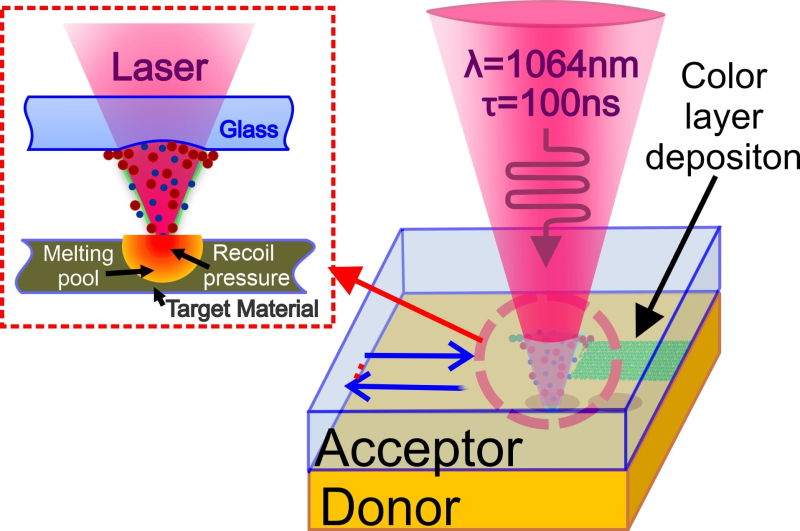
Indirect laser marking. Image courtesy of the researchers
Color marking: advantages and production
Color marking allows for contrasting and therefore more visible marks that can be detected and scanned easily. Manufacturers can also pick their own colors or shades, making their labels even harder to replicate.
Creating a colored code requires glass, as well as coloring materials. The process goes as follows: glass and metal are placed inside a laser marking unit and, as the laser beam goes through the glass, it affects the metal, which, exposed to high temperatures, evaporates, oxidizes, and forms an oxide film on the surface of the glass, creating a label.
Metals used in color marking are called donor materials. These are primarily pure metals, such as aluminum, graphite, and copper. But as each of them can produce only one color (gray, black, and red, respectively), it takes several procedures to create a multicolor label.
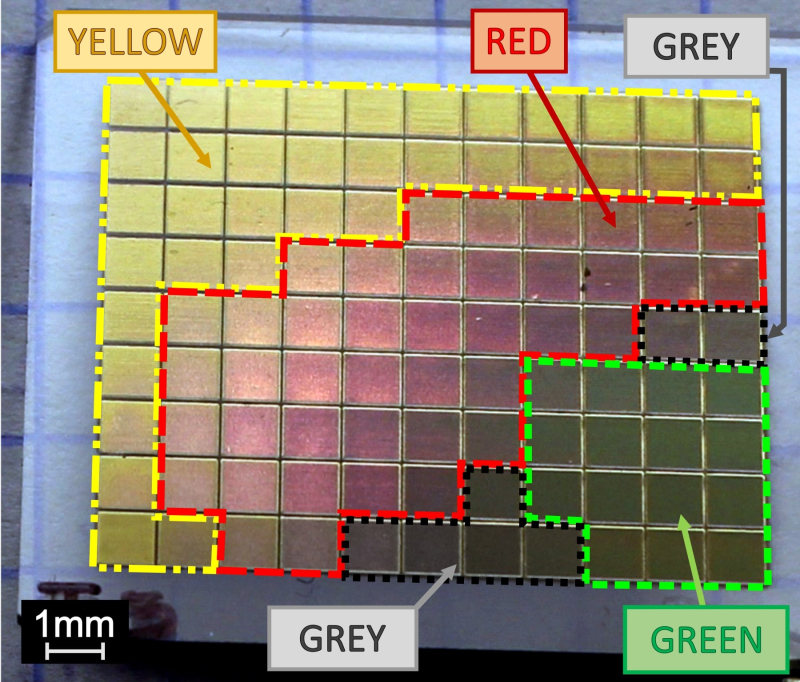
The color palette of colors and shades. Image courtesy of the researchers
What ITMO researchers suggest
Supported by researchers from St. Petersburg State University’s Centre for Optical and Laser Materials Research and the company Laser Center, the scientists from ITMO proposed to use a multicomponent brass alloy to achieve a wider color palette.
Apart from brass, the alloy is composed of copper, zinc, iron, phosphorus, lead, antimony, and bismuth. When exposed to air, the chemical elements form an oxide film that colors the marking: a yellow pigment is made by the reaction of zinc oxide, whereas green is a result of interaction between zinc oxide, cuprite (Cu2O), and different oxidation states of copper.
Among the product’s benefits are:
Simplicity. The novel approach makes glass marking easier and more cost-efficient with no need to use several metals or expensive equipment to produce high-contrast codes in green, yellow, red, and gray.
Speed. Engraving now requires less time. Using the technology, a 10x10 mm QR code can be produced in less than 2 seconds. Moreover, the technology works for both large and small products: the researchers managed to create a high-resolution colored QR code consisting of dots only 30 micrometers in diameter.
Durability. The developed labels cannot be removed from the glass surfaces due to laser material deposition. With the parameters of laser processing well chosen, the plasma implants a non-ferrous alloy inside the material. Furthermore, it leaves no microcracks or surface damages, which is common with traditional methods, like CO2 lasers.
Applications
The method can be of use in fields that require a high marking quality: the jewelry industry, the production of optical devices, architecture, or art. Using the technology, the scientists made a contour drawing named Solar Wings and produced micrometric reticles on glass slates that can be used to measure the length, width, and depth of various objects, such as minerals, alloys and metals, as well as microelements and drug particles.
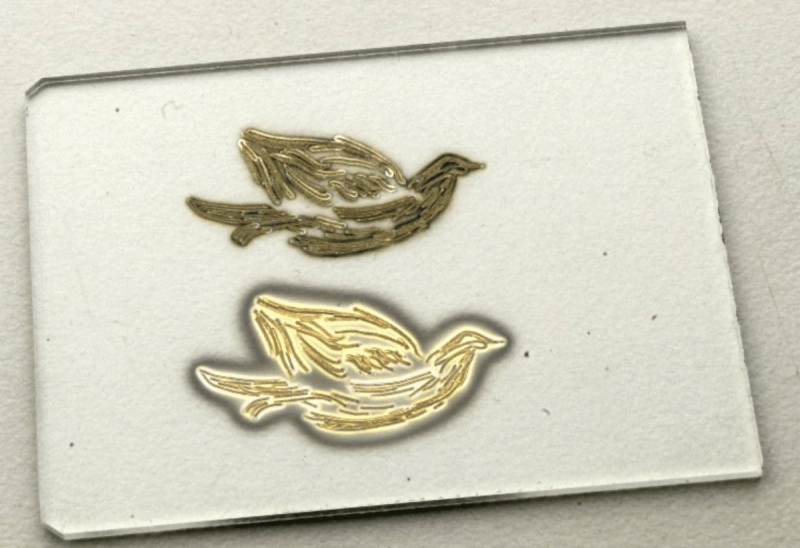
One of the possible uses of colored marking are contour drawings, like this image created by the researchers. Photo courtesy of the researchers
Prospects
The team plans to further investigate the technology to figure out what other colors and shades they can create, how the alloy deposition conditions affect the optical and chemical properties of marked products, and what minimum marking size is possible.
“The method of creating thin oxide films is also used in the production of electronic devices and parts. If we find a way to make it quicker and more stable, we will be able to produce films with desired properties and, for one, create a protective marking with higher resolutions and a smaller size for VR microlenses,” shares Alejandro Ramos-Velazquez, the first author of the paper and a research engineer at ITMO’s Institute of Laser Technologies.
The study is supported by the Russian Ministry of Science and Higher Education as part of the project Development of High-Tech Production of Equipment and Technologies for Laser Functionalization of the Surface of Medical Products.
Reference: A. Ramos-Velazquez, J. Amiaga, D. Pankin, G. Odintsova, R. Zakoldaev, V. Veiko. Laser-induced micro-scale polychrome marking of glass materials (Materials Letters, 2023).
